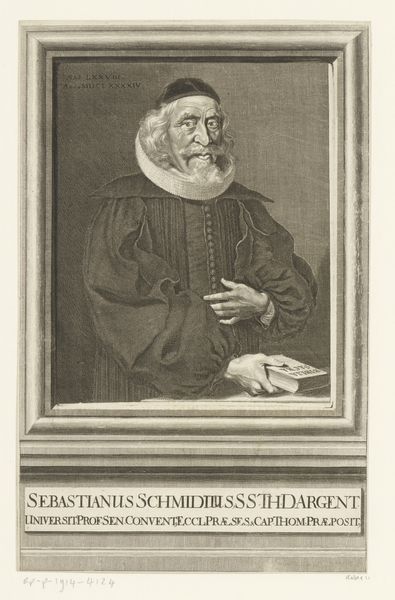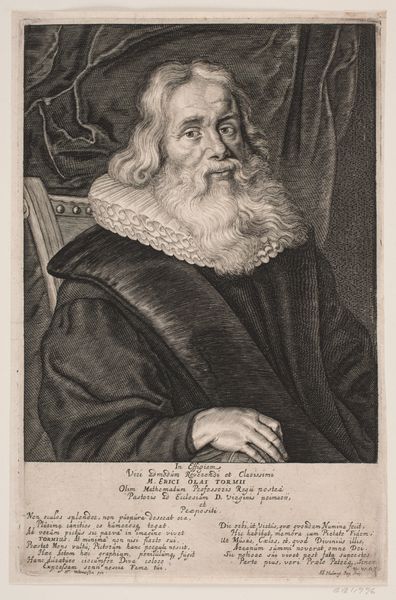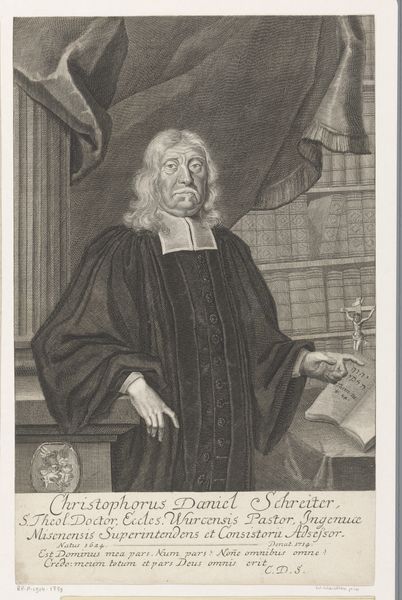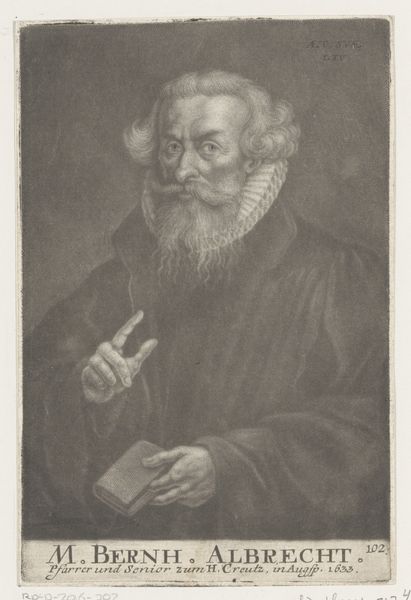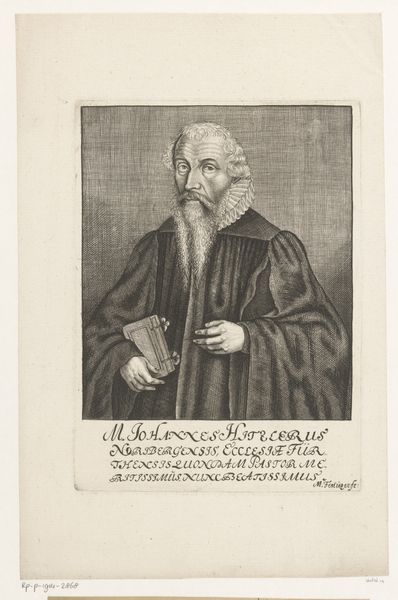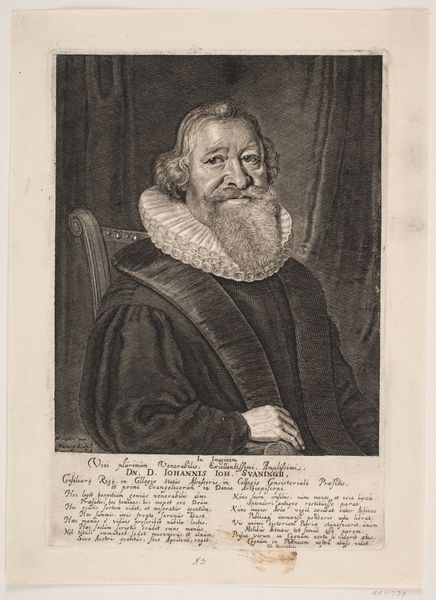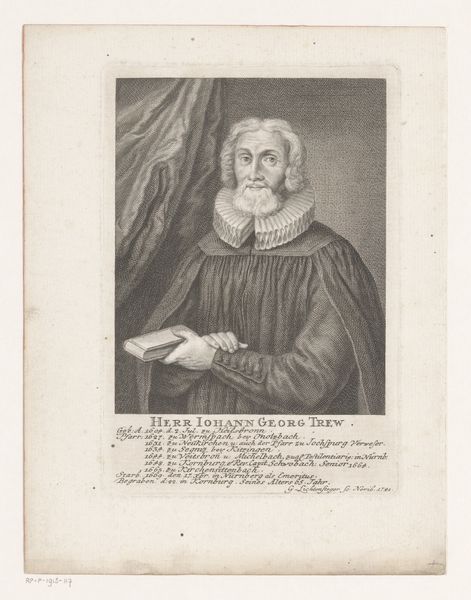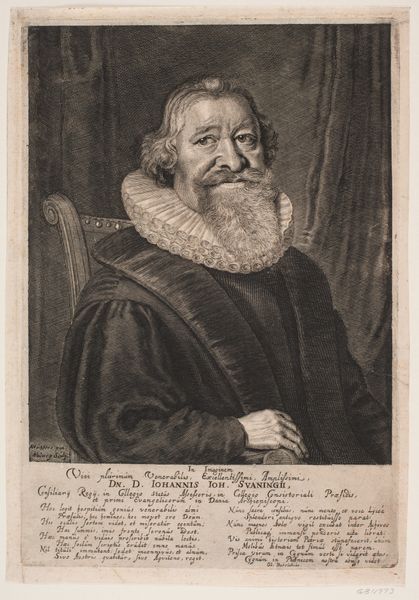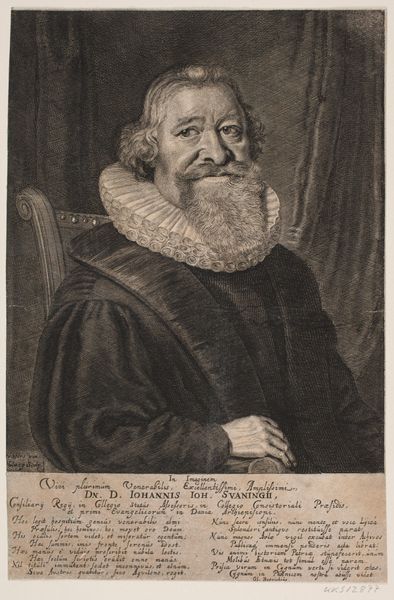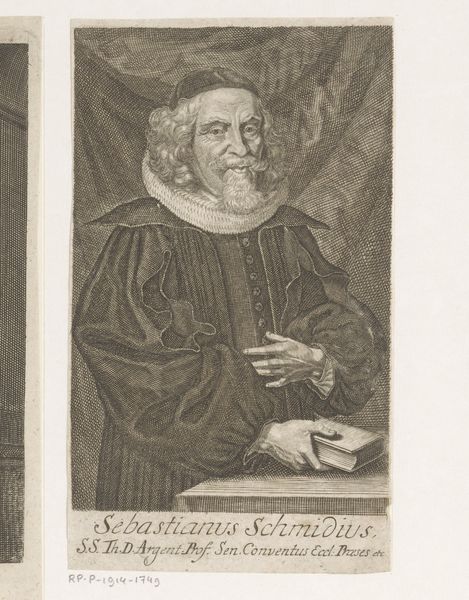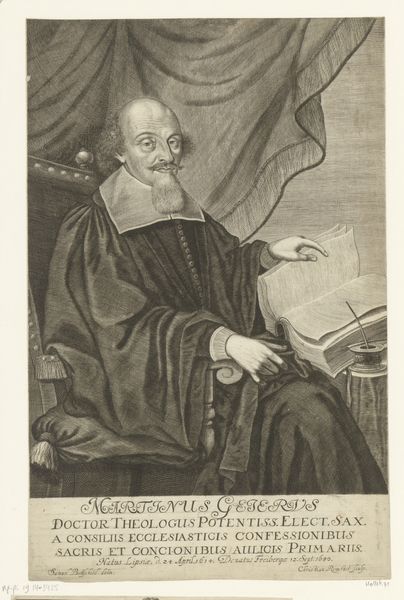
engraving
#
portrait
#
baroque
#
old engraving style
#
charcoal drawing
#
history-painting
#
engraving
Dimensions: height 198 mm, width 149 mm
Copyright: Rijks Museum: Open Domain
Curator: "Portret van Sebastian Schmidt," an engraving dated between 1694 and 1717, at the Rijksmuseum and attributed to Johann Adam Seupel. The baroque aesthetic coupled with the subject’s stern expression give this piece a serious air. What stands out to you upon initial viewing? Editor: I'm really struck by how the composition uses contrasting tones to create such a distinct figure. The crisp lines of his collar really pull the eye in, and the detail in the facial features is incredible, given it's an engraving. How do you interpret this work, considering its formal elements? Curator: Indeed. Notice how the lines are meticulously arranged to articulate volume and texture. The artist’s command over line weight generates both light and shadow, animating the image. The contrast creates a focal point around the face. Consider the way the hat balances against the large white collar to emphasize verticality and symmetry within the composition. Do you see how the engraver contrasts plain surfaces against more ornate textures? Editor: Yes, absolutely. The smoothness of his face versus the complex folds in his clothing highlights a very subtle hierarchy. How does that hierarchy shape our reading of the portrait? Curator: In essence, it distills the subject down to carefully constructed geometry and textural juxtapositions. It uses binary oppositions--light and shadow, line and mass--to build a presence. The textures enrich the stark, linear portrait. Editor: That’s a really helpful way to see it. Focusing on the formal elements reveals so much about how the portrait functions, not just what it represents. Thank you. Curator: Indeed. By understanding how line, form and texture interplay, we unlock layers of intended expression, and further the reading of art objects through material analysis.
Comments
No comments
Be the first to comment and join the conversation on the ultimate creative platform.
